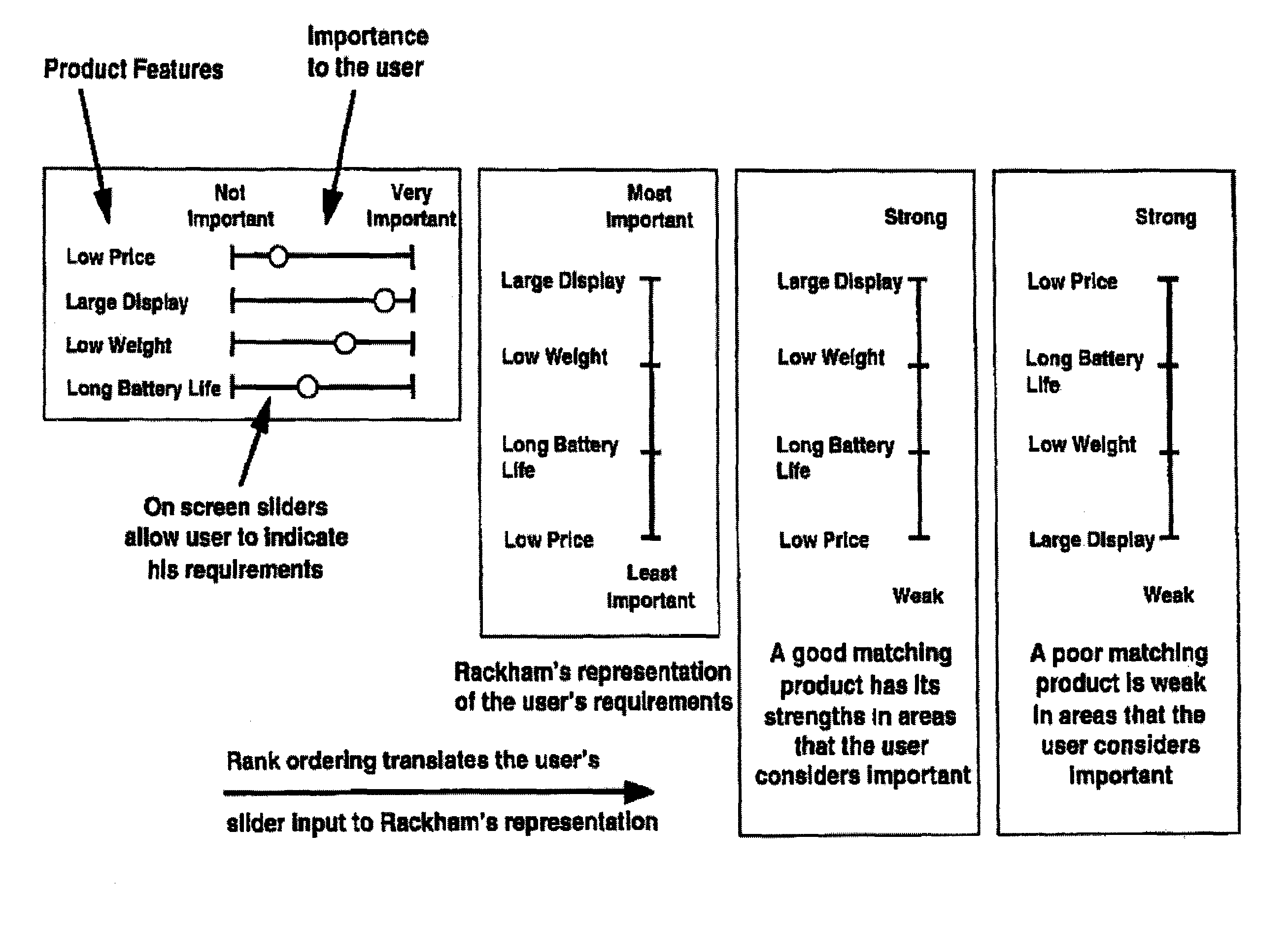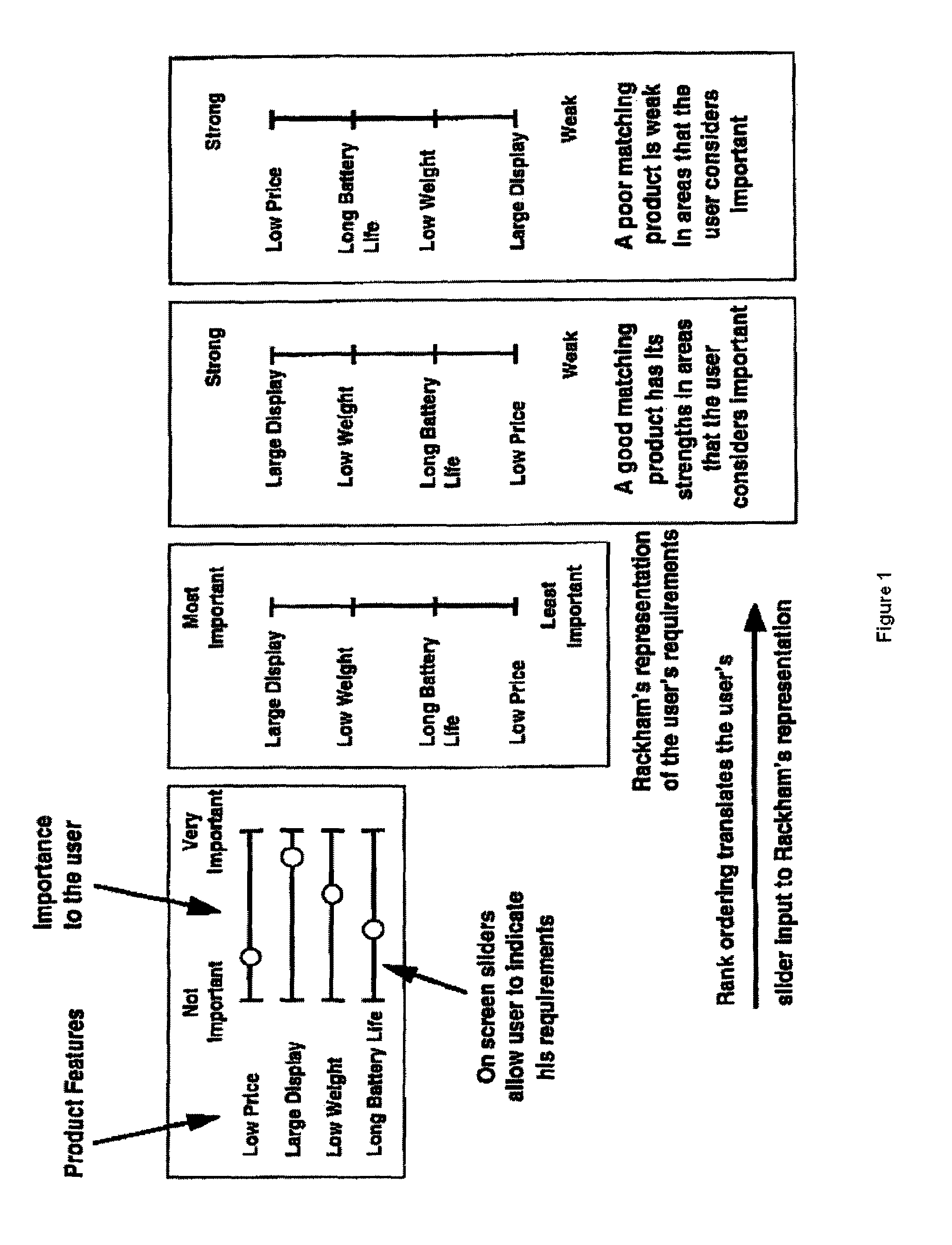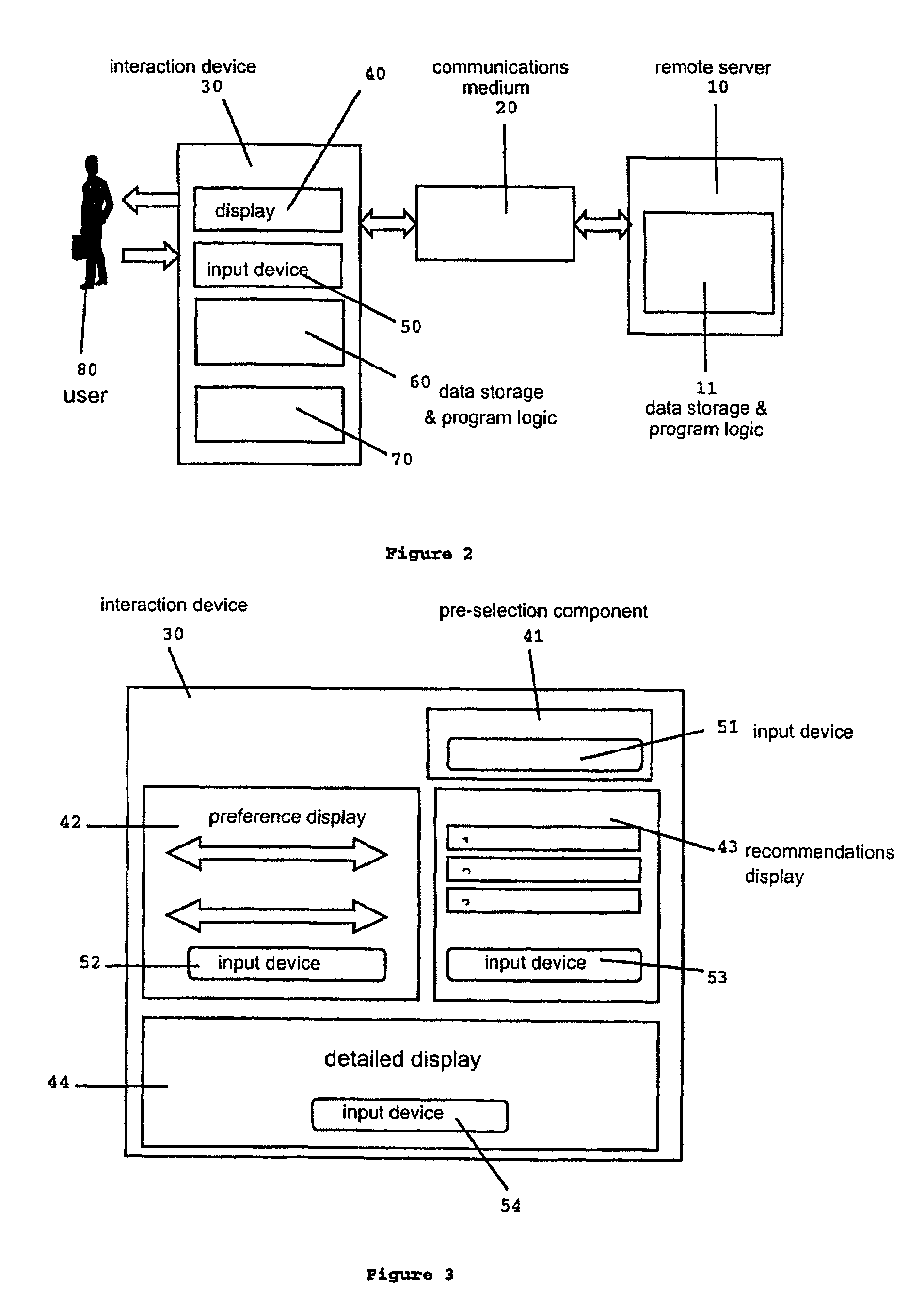Decision aid
a technology of decision aid and decision criteria, applied in the direction of instruments, buying/selling/leasing transactions, commerce, etc., can solve the problems of not being able to non-linearly weight the decision criteria of the present system, the decision-making process is complicated to a large extent, and the customer will often not reach a decision to purchase. , to achieve the effect of fast and efficient manner
- Summary
- Abstract
- Description
- Claims
- Application Information
AI Technical Summary
Benefits of technology
Problems solved by technology
Method used
Image
Examples
Embodiment Construction
[0050]The present invention provides a system which provides a user with a method of using Rackham's theories without having to understand them. The invention combines:[0051]a technique for interacting with the user that allows the user to indicate the importance of criteria for selecting a product or service, and in so doing allows the ranking of the criteria to be inferred;[0052]an algorithm for scoring which places a greater weight on the match of candidate products or services for criteria ranked highly by the user and which places a lesser weight on the match of candidate products or services for criteria ranked lowly by the user;[0053]a technique for ranking the scores of candidate products or services and displaying the leading products or services deduced to be the most appropriate for the user.
[0054]The present invention involves the novel combination of a user interface comprising several sliders with Rackham's hypothesis and with a novel weighted matching algorithm to ran...
PUM
 Login to View More
Login to View More Abstract
Description
Claims
Application Information
 Login to View More
Login to View More - R&D
- Intellectual Property
- Life Sciences
- Materials
- Tech Scout
- Unparalleled Data Quality
- Higher Quality Content
- 60% Fewer Hallucinations
Browse by: Latest US Patents, China's latest patents, Technical Efficacy Thesaurus, Application Domain, Technology Topic, Popular Technical Reports.
© 2025 PatSnap. All rights reserved.Legal|Privacy policy|Modern Slavery Act Transparency Statement|Sitemap|About US| Contact US: help@patsnap.com



